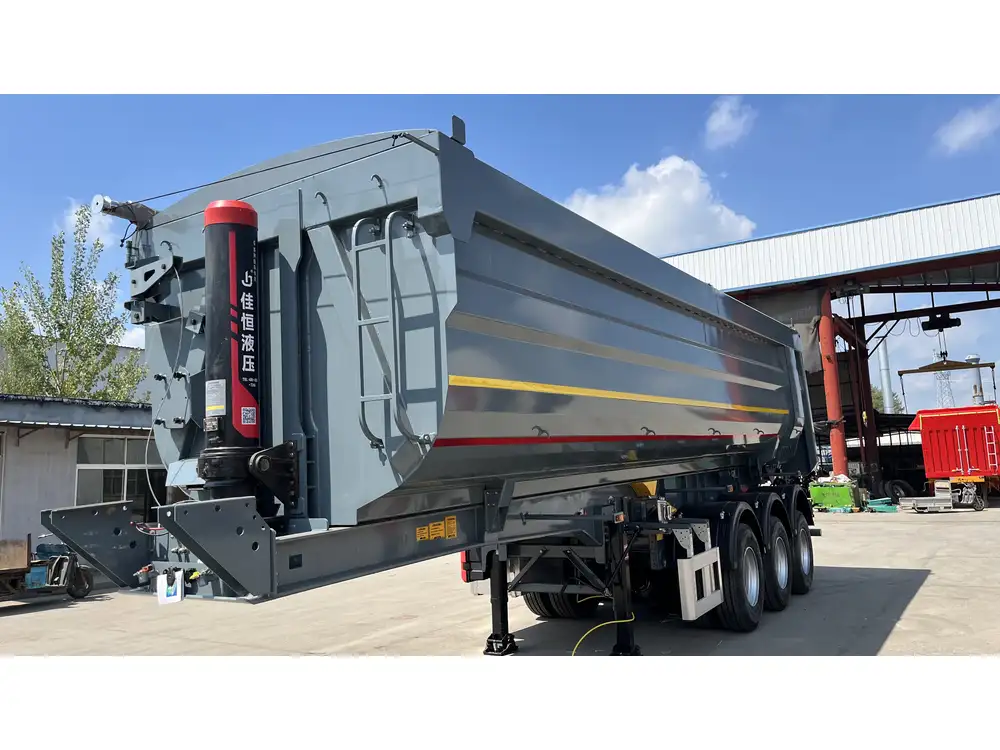Introduction
Constructing your own dump trailer can be an exhilarating and rewarding project. Not only does it allow you to customize a trailer that meets your specific needs, but it can also save you a significant amount of money compared to purchasing a pre-made model. This guide delves deep into the steps, materials, and considerations you must account for to successfully build a dump trailer tailored to your requirements, whether for commercial use or home projects.
Understanding the Basics of a Dump Trailer

What is a Dump Trailer?
A dump trailer is designed specifically to transport bulk materials, such as gravel, dirt, and debris, and has the ability to tilt backward to unload its contents. This efficiency makes it indispensable for construction sites, landscaping, and other tasks requiring heavy lifting and transport.
Key Components of a Dump Trailer
A dump trailer consists of several integral parts, each playing an essential role in its functionality:
- Chassis: The frame provides the structural support.
- Axles: These are crucial for the trailer’s movement, determining the load capacity.
- Bed: The area where materials are loaded and unloaded.
- Hydraulic System: Essential for the lifting mechanism, allowing the bed to tilt and dump its contents.
- Tires: These determine the terrain capability and durability.
Planning and Designing Your Dump Trailer

Step 1: In-Depth Research and Requirements
Before embarking on this project, assess your needs:
| Requirement | Description |
|---|---|
| Loading Capacity | How much weight will you typically be hauling? |
| Dimensions | What are the size constraints for storage/usage? |
| Usage Frequency | Will it be used for personal projects or frequently for commercial purposes? |
Step 2: Creating a Blueprint
Create a detailed blueprint that considers all dimensions, materials, and structural elements:
- Dimensions of the Bed: Common sizes are 5×8 feet, 6×10 feet, and 7×14 feet.
- Height of the Sides: Standard side heights are anywhere from 24 to 36 inches.
- Wheel Placement: Decide if you want a single or dual-axle setup.
Step 3: Selecting Materials
Choosing the right materials is imperative for durability and weight capacity. Common materials include:
- Steel: Preferred for its strength but may require additional rust protection.
- Aluminum: Offers lightness and corrosion resistance.
- Wood: Can be used for the bed, though it requires treatment for longevity.
| Material | Pros | Cons |
|---|---|---|
| Steel | Strong and durable | Heavier, prone to rust |
| Aluminum | Lightweight and corrosion-resistant | More expensive |
| Wood | Cost-effective | Less durable, requires treatment |

Important Considerations
Regulatory Compliance
Before building, check local regulations regarding trailer construction and usage. This can include:
- Weight Limits: Know the maximum towing capacity for your vehicle.
- Registration: Many regions require trailers to be registered.
- Safety Standards: Adhere to safety guidelines to ensure your trailer is roadworthy.
Tool and Equipment Requirements
To build a truck trailer effectively, the following tools will be invaluable:
- Welding Machine: For metal frame assembly.
- Saw: For cutting wood or metal.
- Drill: Essential for creating holes for screws or bolts.
- Measuring Tape: Precision is key when measuring components.
- Jack Stand: To support the trailer during construction.

Step-by-Step Guide to Building Your Dump Trailer
Step 1: Constructing the Frame
- Cut the Steel or Aluminum Beams: Based on your blueprint dimensions, cut the primary beams for the trailer frame.
- Weld the Frame Together: Using a welding machine, construct a rectangular frame. Ensure that all corners are square for balance.
Step 2: Adding the Axles and Wheels
- Choose Axles According to Loading Capacity: Install either single or dual axles based on your design. Check load ratings.
- Attach Wheels: Insert wheel assemblies onto the axles, securing them according to manufacturer instructions.

Step 3: Building the Bed
- Create the Base: Cut plywood or steel sheets to form the trailer bed. It should be robust enough to withstand heavy material loads.
- Secure the Sides: Attach vertical supports and side panels. Ensure these are well-reinforced.
Step 4: Installing the Hydraulic System
- Choose the Right Hydraulic System: Depending on the trailer size, select a system with adequate power.
- Install the Cylinder and Pump: Position these as per the system requirement, ensuring correct alignment with the bed.
Step 5: Finishing Touches
- Wiring: Connect the hydraulic pump to the battery or pickup truck, ensuring clear pathways for electrical signals.
- Weight Distribution: Test the trailer’s balance by loading it as you would in practice.
- Painting and Rust-proofing: Apply a coat of paint or rust-resistant sealant.

Maintenance Tips for Your Dump Trailer
Proper maintenance extends the life of your dump trailer. Consider these tips:
- Regular Inspections: Check for signs of wear, rust, and any hydraulic fluid leaks regularly.
- Tire Maintenance: Inspect tire pressure and tread condition frequently.
- Clean the Bed: Following every use, removing debris will prevent corrosion and wear.
Additional Customization Options
Enhancements and Accessories
To maximize functionality, consider adding these features:
- Side Extensions: Increase the volume capacity for larger loads.
- Tarp System: Protect loads from wind or weather.
- Extra Stabilizers: For enhanced stability during dumping.

Adapting for Specific Uses
Your dump trailer can be tailored for various applications:
- Landscaping: Use for soil, mulch, or debris transport.
- Construction: Ideal for moving gravel, cement, or equipment.
- Recycling: Efficient for hauling scrap material to recycling centers.
Conclusion
Constructing your own dump trailer is an exciting endeavor that offers both practicality and personalization. The intricacies involved in building one—from careful planning and material selection to hands-on assembly—mean that with the right guidance and tools, you can create a trailer that precisely fits your needs. Dive into the project armed with detailed knowledge and be prepared to reap the rewards of having a customizable, efficient, and dependable dump trailer at your disposal. Embrace the challenge, and you’ll find the journey rewarding every time you use your custom-built creation.



